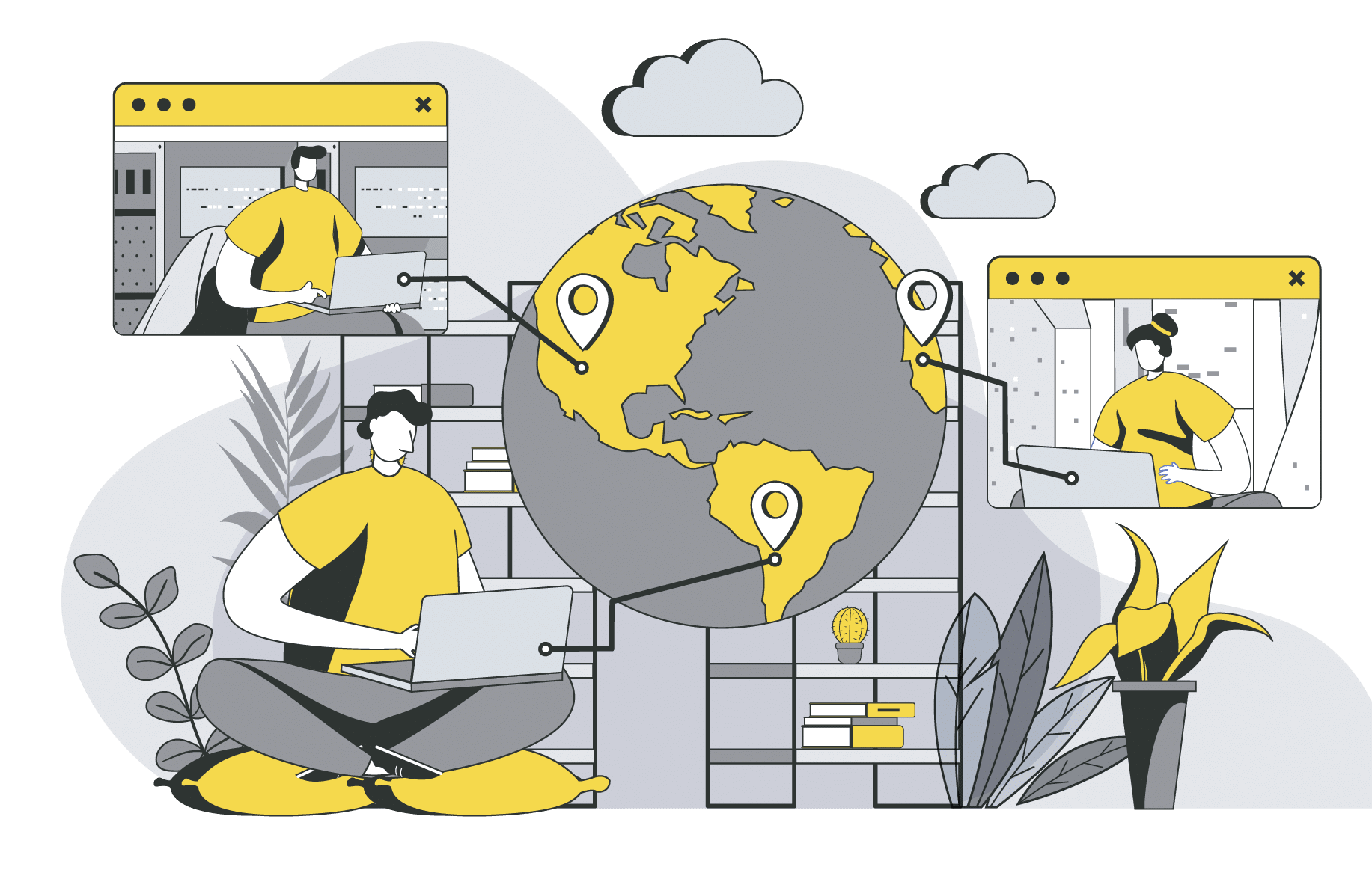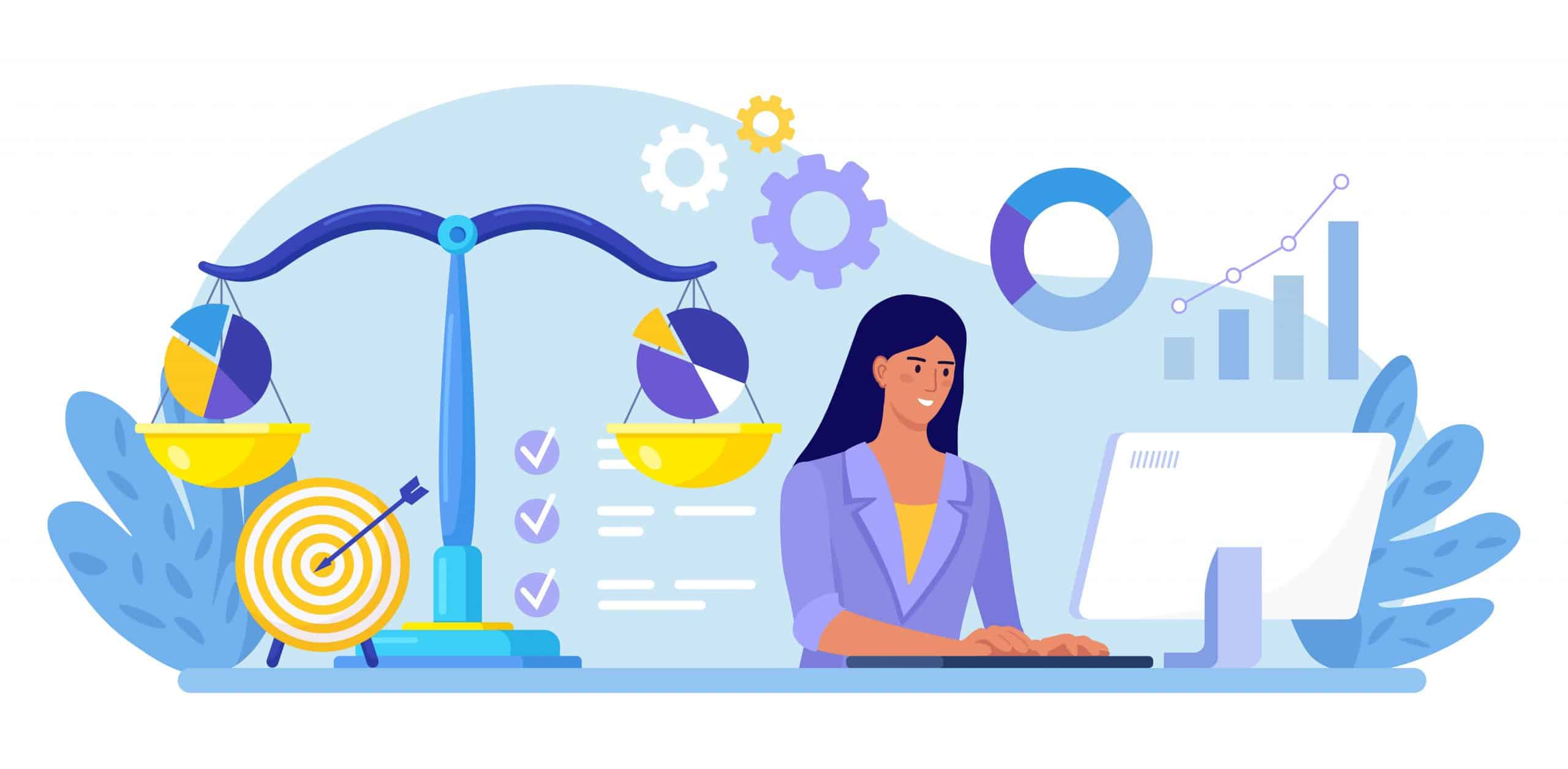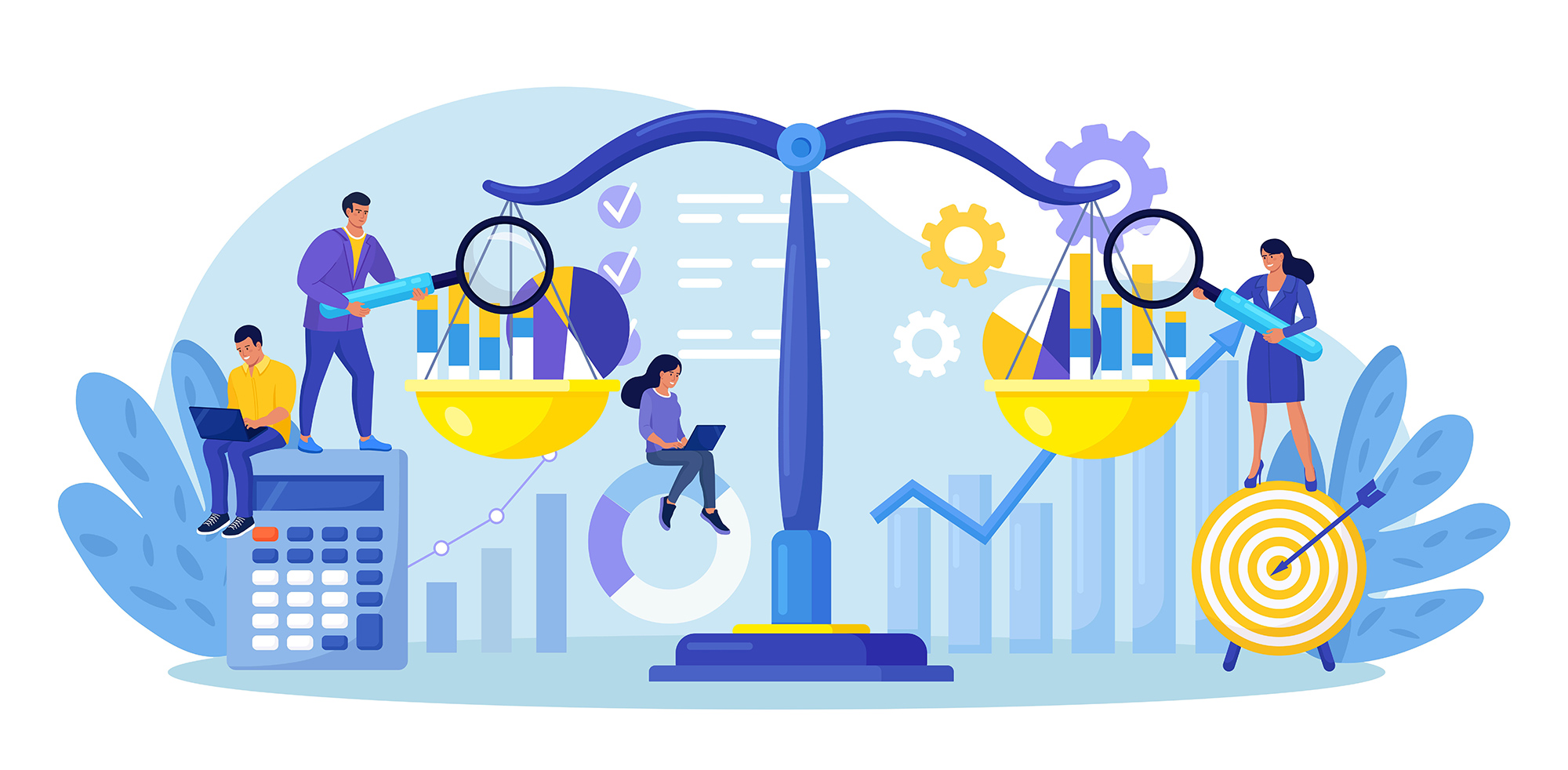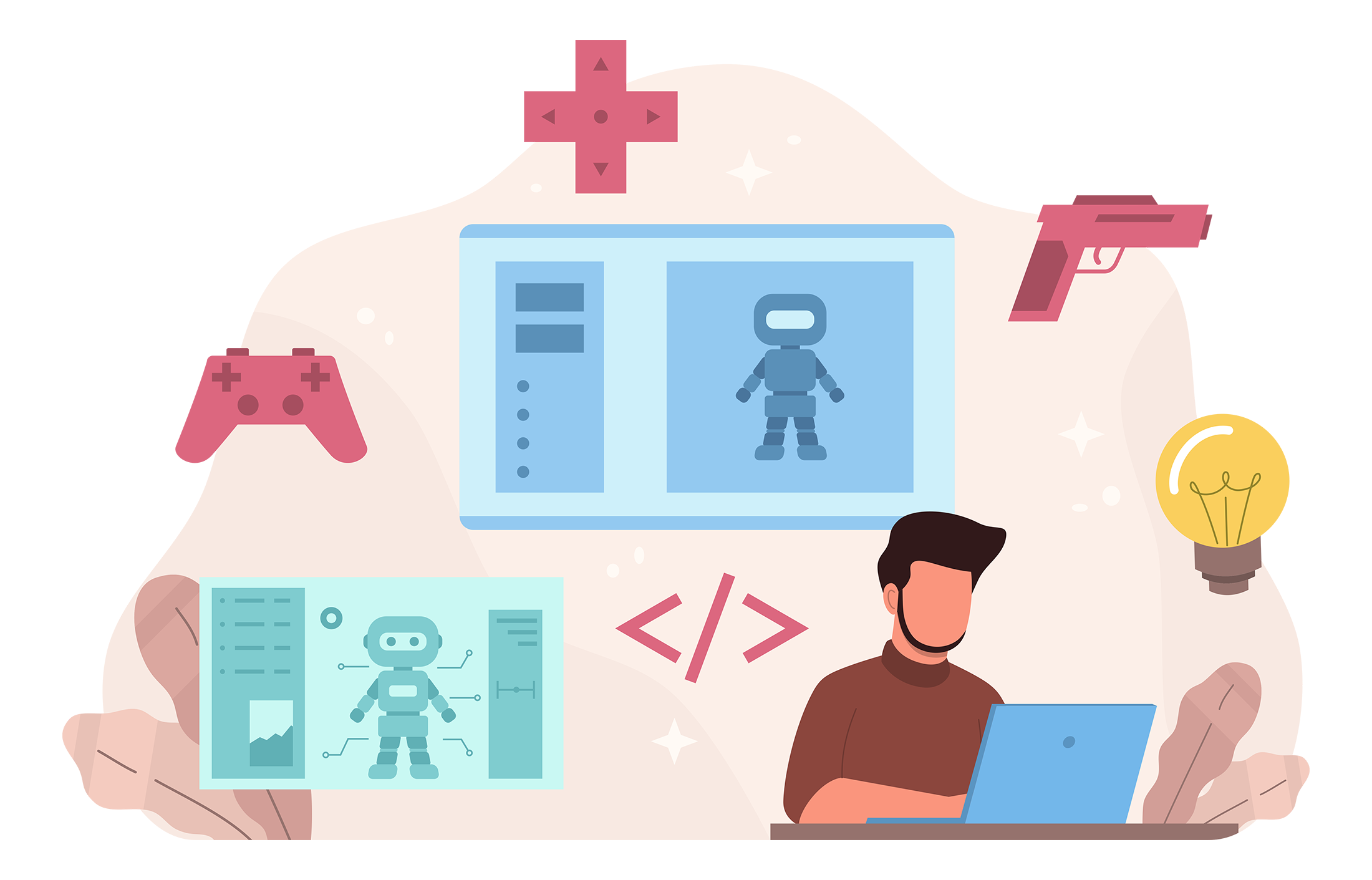How to outsource app development
Revenue in the IT outsourcing market is projected to reach $460.10 billion in 2023 and $777.70 billion by 2028. Nothing is surprising about such growth. Companies are turning to outsourcing to get specialized personnel, shorten time to market, and save on overheads associated with in-house teams.
In this article, we will discuss these and other outsourcing advantages, the challenges that await you, and popular cooperation models. And most importantly, you will learn how to outsource app development and how much it can cost. We will share all this from our experience.

GetTrusted is a platform that helps you find the right IT outsourcing partner, guaranteeing quality results. We do not work with freelancers and collaborate only with experienced vendors, thoroughly interviewing them and reviewing their past projects. We select the most appropriate companies that work in your niche and time zone and specialize in the necessary technologies. But let’s start with the basic concepts of outsourcing.
Advantages of Outsourcing App Development
By collaborating with external experts, companies can streamline their development processes and leverage various benefits to create successful mobile applications. Let’s overview the most significant ones:
Cost Efficiency
57% of companies think the overall need to cut costs is the primary driver of outsourcing. First, you can hire specialists from countries with lower living costs than in the United States, Canada, or Western Europe. Also, you will avoid overhead costs for office space, equipment, employee benefits, and training.
Better Business Focus
Delegate the technical aspects of your project so you can concentrate on your core competencies and strategic business functions. At the same time, outsourcing partners typically provide a dedicated project manager. This person is responsible for managing the development process, coordinating team members, and ensuring progress aligns with the project plan.
Quick Time to Market
The experience and established workflows of outsourcing partners enable them to work efficiently, reducing the time required to build and deploy your app. Precise planning minimizes potential delays, ensuring your app reaches the market within the defined timeframe.
Top Experts in the Field
50% of executives identify talent acquisition as an ultimate internal challenge in meeting their organization’s strategic priorities. Outsourcing provides access to a global talent pool, enabling you to hire experts in specific fields such as artificial intelligence, machine learning, blockchain, augmented reality, etc.
Flexibility
Outsourcing companies often employ flexible Agile methodologies like Scrum or Kanban, emphasizing iterative development with ongoing adjustments and enhancements. They break down your project into modular components, or sprints, to pivot and incorporate changes without disrupting the entire system.
Scalability
With outsourcing, you can scale your development team up or down as needed. For example, bring extra developers, designers, quality assurance experts, or other specialists. This adaptability is particularly valuable for projects with fluctuating workloads or evolving needs.
Risk Mitigation
Outsourcing companies have extensive experience in app development across various industries and project types. They identify and analyze potential risks early in the project planning phase. And if unexpected challenges arise or additional expertise is required, your partner can quickly allocate the necessary resources.
Security
Outsourcing companies implement robust security protocols to ensure applications comply with local regulations and data protection rules. Secure source code storage and Non-Disclosure Agreements (NDAs) protect user data and your app idea.
How to Outsource Mobile App Development: Step-by-Step Guide
Now that you’re familiar with the advantages of outsourcing mobile app development, let’s delve into the primary stages of creating a successful app.
1. Preparing for App Development Outsourcing
First, you should define the objectives and goals of your project. Allocate a budget, considering development costs, contingency funds, and additional expenses. Creating a detailed project scope document with app features, functionality, and technical requirements is also important.
Consult with legal experts to draft contracts, non-disclosure agreements (NDAs), and other legal documents to protect your intellectual property and define the terms.
2. Choosing the Right Outsourcing Partner
Research potential outsourcing candidates considering cost, quality, cultural compatibility, and time zone differences:
- GetTrusted platform with reliable vendors and escrow service
- Outsourcing marketplaces like Clutch and GoodFirms
- Social media like LinkedIn, Twitter, and Facebook
- Industry-specific websites like GitHub, Behance, and Dribbble
- Industry conferences, meetups, and networking events
- Recommendations from colleagues, friends, or business contacts
Shortlist and evaluate outsourcing companies based on their portfolios, client reviews, certifications, and expertise in the required technologies. Conduct interviews and due diligence to understand their capabilities, team structure, project management practices, and communication methods. Request and check client references to gain insights into their past performance and client satisfaction.
Or you can delegate all this to GetTrusted, paying nothing for such assistance. Moreover, you will get escrow service and technical assistance.
3. Outsourcing Process Navigating
Conduct a project kickoff meeting to ensure everyone is aligned on objectives, roles, and expectations. Experienced outsourcing companies usually use effective project management processes, such as Agile methodologies, task-tracking tools, and regular progress reporting.
Set up convenient communication channels like Slack, project management software, and email. At this stage, defining project milestones and approximate dates of calls and interim reporting is crucial. Regularly review progress to ensure the project stays on track.
4. Effective Communication
You should be aware of cultural differences, including time zone variations and holidays for effective communication. Schedule regular status meetings to discuss progress, address issues, and provide feedback. It may include daily or weekly stand-up meetings, monthly check-ins, and milestone reviews.
Maintain clear and organized project documentation, including requirements, design specifications, and change requests. It’s essential to document any changes or updates to the project requirements.
Create an environment where team members feel comfortable sharing their thoughts and concerns. Conduct regular retrospectives to reflect on what’s working well and what could be improved.
5. Quality Assurance and Data Security
By prioritizing QA and data security, you can minimize the risk of critical issues, enhance user trust, and ensure compliance with legal and regulatory requirements. Regular audits and testing should be ongoing processes to maintain the security and quality of your app even after its initial release.
Be sure to implement a comprehensive testing strategy that includes unit, integration, functional, usability, and performance testing. Conduct periodic reviews of test cases and results to ensure they align with project goals.
Clearly outline the security measures that must be implemented, such as encryption, access controls, authentication mechanisms, and intrusion detection systems. Define how sensitive data will be handled, stored, and transmitted securely.
Ensure compliance with data protection regulations, such as GDPR (General Data Protection Regulation) in Europe or HIPAA (Health Insurance Portability and Accountability Act) in the healthcare industry.
7. Wrapping Up and Evaluating Results
Ensure all project deliverables have been completed and the app is ready for deployment or launch. This includes a final review of the code, documentation, and any other project assets.
Conduct a comprehensive evaluation of the project:
- Assess whether the app meets quality standards, adheres to requirements, and delivers a positive user experience.
- Compare actual project costs and timelines with the initial estimates and assess any deviations.
- Reflect on the effectiveness of communication with the outsourcing team
- Review the outsourcing partner’s performance, including adherence to project milestones and deliverables.
If user acceptance testing (UAT) has not been conducted earlier in the project, perform it to ensure that the app meets user expectations and functions as intended. Define post-launch support and maintenance plans to address any issues arising after deployment.
Challenges in App Development Outsourcing
Despite the clear advantages of outsourcing mobile app development, there are some concerns you should be prepared for:
Vendor Selection
Evaluating vendors based on expertise, reputation, and capabilities requires thorough research and due diligence to avoid potential issues.
At GetTrusted, we personally check the reputation of the vendors, their experience, and skills — and recommend the three most suitable IT companies.
Data Security Concerns
You may be concerned about data breaches or unauthorized access when outsourcing to external teams. Check their security measures and sign an NDA to protect your rights.
GetTrusted prioritizes security and dependability to eliminate potential risks. Your vendor will sign an NDA to protect your rights as the product owner.
Communication Barriers
Language differences, time zone variations, and cultural disparities can lead to miscommunication and misunderstandings. Consider this factor when making a choice.
We understand the importance of language and time zones in communication, so we recommend only vendors with suitable capabilities.
Lack of Domain Knowledge
Outsourcing teams may lack domain-specific knowledge about your industry or business. Ensure the chosen partner is experienced in your field and has a proven track record.
At GetTrusted, we offer you the opportunity to choose only among those companies that meet your technical and industry knowledge needs and adhere to standards.
Unforeseen Outcomes
Discovering that your chosen vendor fails to deliver the anticipated results can be disappointing. Always articulate all your expectations and provide timely feedback.
With our escrow service, you can be sure contract terms are met. Your payment is released after our quality check, provided during each development stage.
Key Models in App Development Outsourcing
How much does it cost to outsource development for an app? First, it depends on the cooperation model you choose.
Fixed Price Model
In this model, you and the outsourcing partner agree on a predetermined price based on the determined scope, requirements, and deliverables. It is most suitable when the project’s scope and requirements are well-defined and unlikely to change significantly.
Its advantages include budget predictability, a clear project scope, and lower financial risk.
However, challenges exist, such as limited flexibility and the risk of incomplete requirements.
Time & Material Model
In the T&M model, clients pay for the actual time and resources, and costs are typically calculated based on hourly rates for each team member involved. This model suits projects with evolving or unclear requirements where changes are expected during development.
Its benefits involve flexibility and transparency; also, it is well-suited for the Agile development approach. At the same time, the total project cost can be uncertain until completion.
Dedicated Development Team
Here, the outsourcing partner assembles a team of developers, designers, and other specialists exclusively for your company. This model is perfect for long-term projects where you need to extend your in-house team.
You get full control, specialized skills and expertise, and the ability to scale your team based on project needs. If not managed efficiently, dedicated teams can result in excess resources.
How much does it cost to outsource app development?
How much to outsource app development? The cost can vary significantly based on several factors:
- Project сomplexity
- Features and functionality
- Design complexity
- Platform (iOS, Android, cross-platform)
- Third-party integrations
- Location of outsourcing partner
- Engagement model
- Urgency
Let’s delve into the actual numbers. The cost of developing a basic mobile app can vary between $25,000 and $50,000, contingent on the team’s geographic location. In contrast, the approximate cost for a complex app with numerous features would be from $100,000 to $200,000.
Find Your Perfect App Development Outsourcing Partner with GetTrusted
Outsourcing has become a salvation for many companies in app development. However, finding a reliable vendor can be challenging. And this is where we can help.
GetTrusted is your reliable assistant in app development outsourcing. You describe your development needs, and within 48 hours, we estimate the project budget and deadline. If everything suits you, we recommend three vendors most suitable for your industry, technology skills, and time zone. We have already checked their reliability and qualifications.
After choosing the best option, you sign a contract and start working on the project. During it, we check the quality of work and, if necessary, help with management and possible difficulties. The IT company receives funds only after our positive assessment of the product. At the same time, you do not pay anything for the search for a vendor or technical supervision.
If you want to find a qualified, reliable vendor experienced in your niche, contact GetTrusted to start the project as soon as possible.










